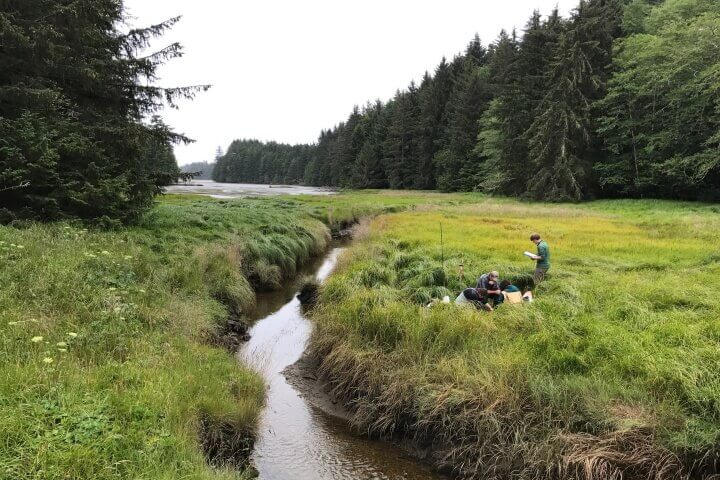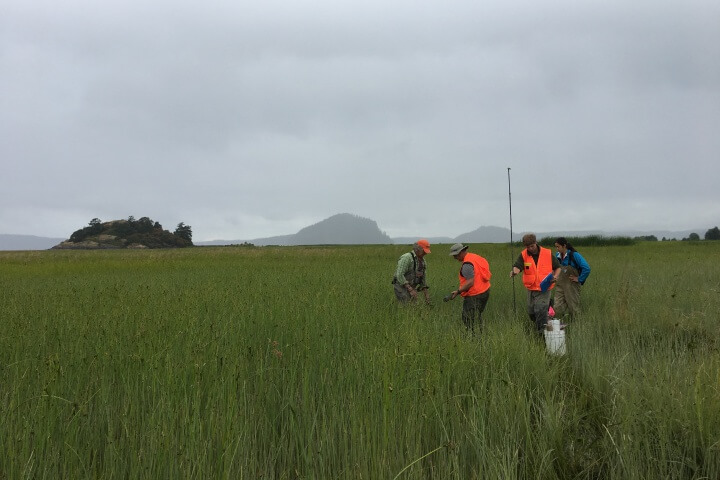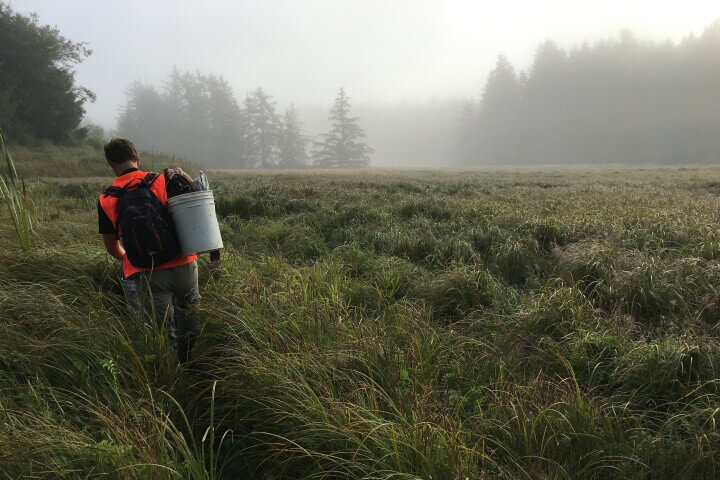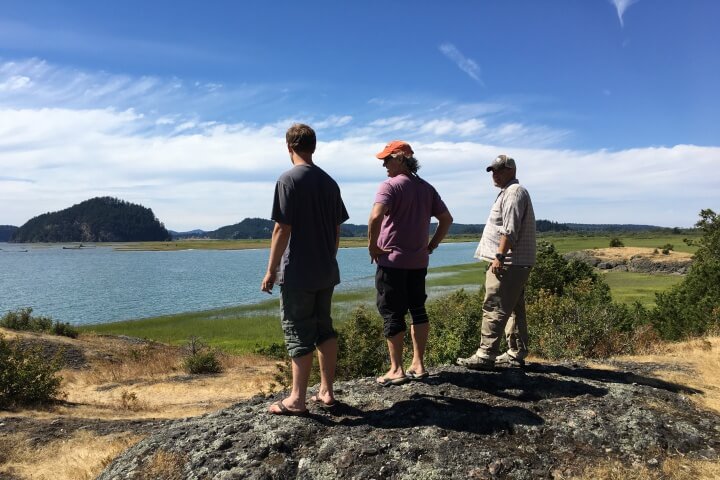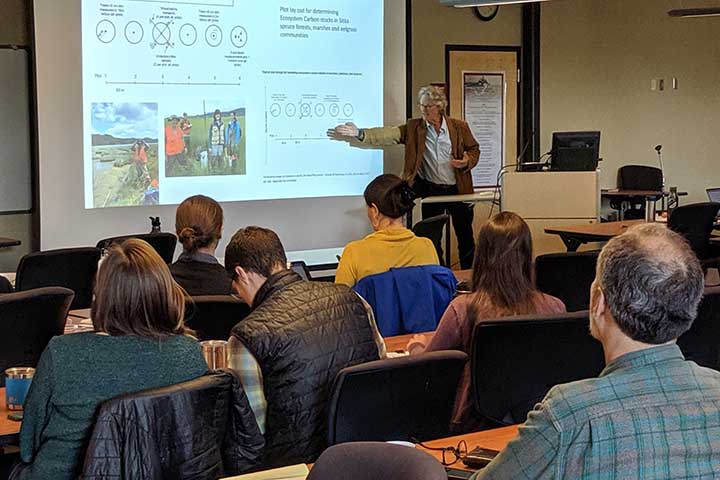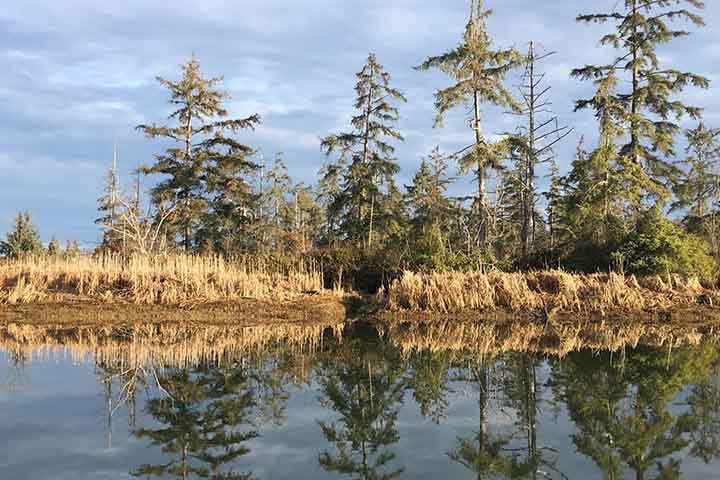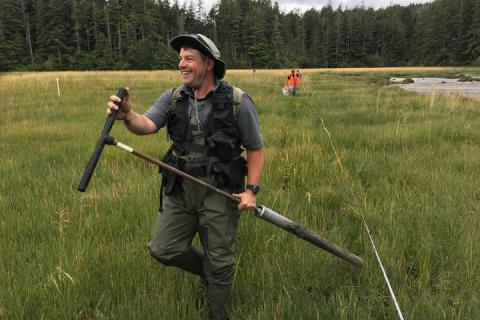
Tidal wetlands play an important role in carbon sequestration by capturing a substantial amount of carbon—termed “blue carbon”—and storing it below ground. Since the Verified Carbon Standard first released a draft “Methodology for Tidal Wetland and Seagrass Restoration” in 2013, members of the Pacific Northwest Coastal Blue Carbon Working Group have worked to fill blue carbon data gaps to facilitate the application of this methodology to the conservation and restoration of Pacific Northwest tidal wetlands. This included data collection and database development efforts, such as the Pacific Northwest Carbon Stocks and Blue Carbon Database Project supported by the Science Collaborative.
This project took the next step to demonstrate the feasibility of including carbon finance in funding strategies that support the conservation and restoration of tidal wetlands, eelgrasses, and coastal lowland sea level rise buffer areas in the Pacific Northwest. By evaluating the viability of blue carbon projects at two sites in Washington (Snohomish and Skagit Estuaries) and one in Oregon (Coos Estuary), the project team advanced local stakeholders’ understanding of next steps for blue carbon management and financing opportunities for land management actions in coastal communities.
